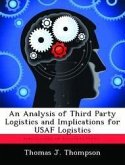The independent third-party protest regime began 83 years ago in 1926 when the General Accounting Office, the Government Accountability Office's (GAO) predecessor, began deciding federal contract award protests. Thirty years later in 1956, the Court of Claims established the judiciary's protest jurisdiction in Heyer Products Co. v. United States. Currently, the two primary third-party protest forums include the GAO and the Court of Federal Claims (COFC). Most disappointed offerors' file their protests with the GAO which considers approximately 1,300-1,400 protests annually. The advantages generally cited for filing with the GAO include efficiency, procurement law expertise, and low cost. A number of recent high profile federal contract protests, including the Air Force's KC-X program, as well as an increase in the number of protests annually, have brought both the Department of Defense (DoD) procurement process and the GAO protest system under increased scrutiny.








